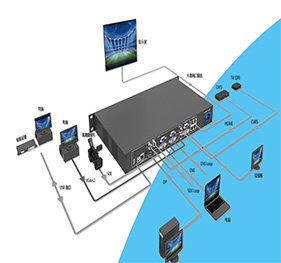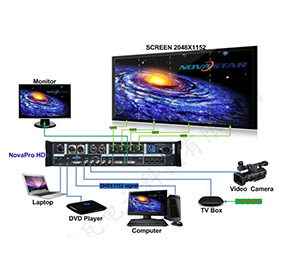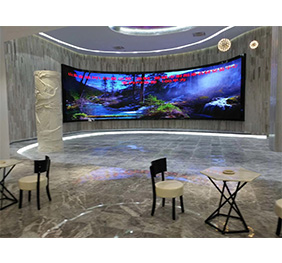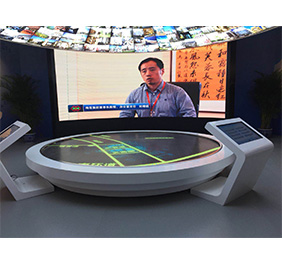Technical Support
Contact Us
Headquarters address:
5th building,Fulongte Technology park,
Huaxing road,Dalang,Longhua district,518109,
Shenzhen,Guangdong,China
Factory address:
5th building,Fulongte Technology park,
Huaxing road,Dalang,Longhua district,518109,
Shenzhen,Guangdong,China
Phone:
+86-755-29043232
Email:
ZBLED@zhongbo-gd.com
SKYPE:
vitaluo320
Outdoor LED display screen after using a large screen, it is inevitable that there will be bad lights, partial black screen and other imaginations, generally due to the LED module above a problem, the following is a common type of 5 outdoor LED module failures and solutions, to share Everyone
1. The LED group is continuously off or abnormal:
This phenomenon usually leads to a large screen with a black screen
Solution: Check whether the cable of the first abnormal module in the signal direction is in good contact with the power cable. If there is no LED on the module, there is no power input. Please check the power supply (check with a multimeter). The bright spots with chaotic colors indicate that the module has no signal input. Please check whether the input terminal of the first abnormal module's cable is tightly contacted and can be tested repeatedly. If the problem still can replace the new cable.
2, LED single module does not shine:
Can cause the display module to not light, black screen appears in the module
Check whether the power supply of the module is good, mainly to check whether the power socket on the module is loose. If the entire module has color confusion or color inconsistencies (but there is a signal input, there is a correct picture) for the signal transmission row County bad contact, re-inserted cable, or replace the tested cable. If you have a good replacement cable still has the same problem, please check whether the PCB board interface problems.
3, single light is not bright problem detection method:
Can cause the phenomenon of dead lights, the playback image is incomplete and unclear.
Use a multimeter to check if the LED is damaged. If the lamp is broken, change the lamp according to item 5 below. Specific measurement methods: put the multimeter into the resistance X1 file, the black meter of the pointer multimeter is connected to the positive pole of the LED, the red meter is connected to the negative pole (the black pen of the digital meter is connected to the negative, and the red pen is connected). If the LED is bright, the measured lamp is OK, if the lights are not on, the measured light is bad.
4, LED bad point maintenance (out of control point):
After a single lamp test confirms that the LED is damaged, the following maintenance methods are selectively used according to actual needs.
4-1 Frontal Maintenance: Remove the fixed mask screws from the front with a corresponding type of screwdriver (make sure to protect the screws), remove the cover, replace the lamp (please replace the lamp according to the following lamp replacement method), change the lamp and seal the gel After the end, the original mask is restored and the screws are tightened (be careful not to press the lamp when tightening the screws). If there is any glue remaining on the surface of the LED, please carefully remove the colloid.
4-2 Maintenance on the back: Remove the screws from the back side with the corresponding model screwdriver (note the retention screws) and unplug the signal cable. For safety, please do not unplug the power cable to prevent accidents. Carefully move the module from Remove the hole in the sheet metal, move it to the back of the box, and then perform the maintenance of the individual module according to the front maintenance method to change the lamp (please change the lamp according to the lamp replacement method below) or overhaul others.
5, change lights:
Remove the glue around the damaged LED with a sharp tool (such as tweezers), and make the LED pin clearly visible in the line of sight. The right hand clamps the LED with a tweezers, and the left hand uses a soldering iron (a temperature of about 40 degrees Celsius, the high temperature will be LED damage) Contact with solder, and stay for a little while (no more than 3 seconds, if it does not reach the dismantling requirement after exceeding the time, please cool down and try again) Melt the solder and remove the LED with tweezers. Fit the LED lamp that meets the requirements correctly into the hole of the PCB circuit board. (The LED lamp's long leg is positive and the short leg is negative. The PCB's "square hole" is the LED's positive pin jack. The "round hole" is LED's. Negative electrode pin jack) Melts a little solder wire and sticks it on the iron head. Use tweezers to adjust the direction of the LED to make it smooth. Solder the solder to the LED and the PCB. Use the same type of gel (pH = 7) Seal the LED.
Service Hotline: +0086-13715391977 +0086-755-29043232 Email: ZBLED@zhongbo-gd.com





















